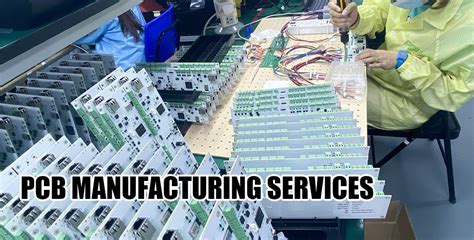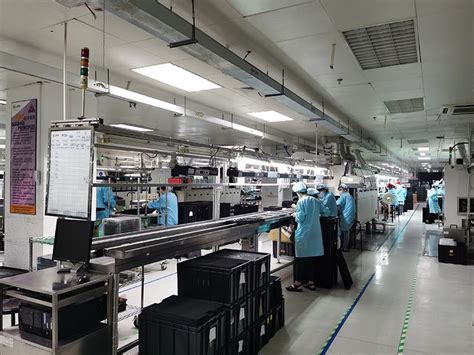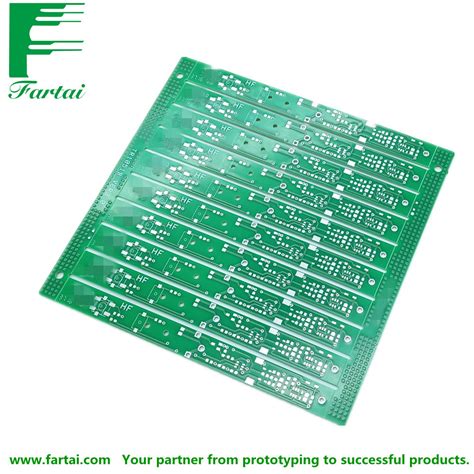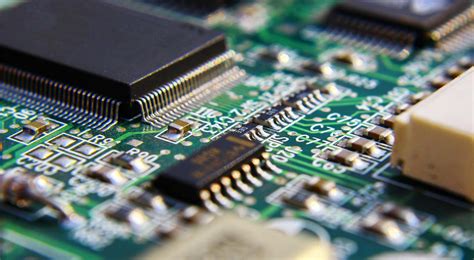Expert PCB Manufacturing Services: Rapid Prototyping & Production
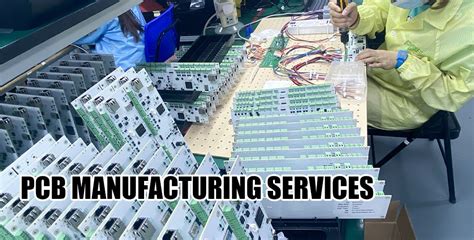
Key Takeaway
When evaluating pcb manufacturing companies, understanding their capabilities across prototyping and production is critical. Leading providers combine rapid prototyping (often within 24 hours) with high-volume scalability, allowing you to transition seamlessly from initial designs to batches exceeding 1 million units. A key factor in pcb manufacturing cost optimization lies in material selection—options like FR4 for standard applications, flex circuits for dynamic designs, and Rogers substrates for high-frequency needs ensure performance without overspending.
Reputable pcb manufacturing business partners adhere to IPC Class 2/3 standards, guaranteeing reliability for commercial or mission-critical applications. For projects requiring complexity, multi-layer boards (up to 32 layers) provide space-efficient solutions, while maintaining 2-day lead times even at scale. Whether you’re ordering 5 prototypes starting at $2 or planning mass production, balancing pcb manufacturing speed, quality, and budget requires a vendor with transparent pricing models and agile workflows. This ensures your project stays on track without compromising technical specifications or delivery deadlines.
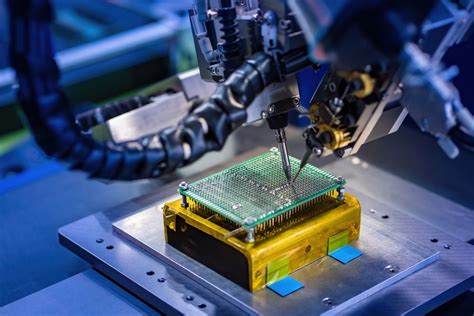
24-Hour Rapid PCB Prototyping
When time-sensitive projects demand precision, PCB manufacturing providers offering 24-hour rapid prototyping become indispensable. This service allows you to validate designs and test functionality within a single business day, significantly accelerating product development cycles. Leading PCB manufacturing companies leverage automated workflows and advanced machinery to produce 1-32 layer boards—from simple FR4 substrates to complex Rogers or flexible materials—without compromising on IPC Class 2/3 standards.
By optimizing PCB manufacturing cost through bulk material sourcing and streamlined processes, these providers deliver prototypes at competitive rates, even for low-volume orders. This agility is critical for startups and enterprises alike, as it reduces time-to-market while ensuring design accuracy. For businesses scaling from prototypes to mass production, seamless integration between rapid prototyping and high-volume manufacturing minimizes logistical friction.
Whether you’re iterating a new design or addressing last-minute revisions, 24-hour turnarounds ensure your PCB manufacturing business stays ahead of deadlines. Advanced CAM software and real-time order tracking further enhance transparency, letting you monitor progress at every stage. This combination of speed, quality, and scalability makes rapid prototyping a cornerstone of modern electronics development.
High-Volume PCB Production Solutions
When scaling your electronics project to mass production, partnering with reliable PCB manufacturing companies becomes critical. High-volume PCB manufacturing demands precision, consistency, and cost-efficiency—qualities that define top-tier suppliers. Modern facilities leverage automated workflows and advanced testing protocols to maintain quality across batches of 10,000 to 1 million units, ensuring your PCB manufacturing business stays competitive.
Tip: Always request a Design for Manufacturability (DFM) review before finalizing large orders. This step helps identify potential bottlenecks and reduces delays.
A key consideration is PCB manufacturing cost, which often decreases with volume due to economies of scale. For example:
| Order Quantity | Cost per Unit (USD) | Lead Time (Days) |
|---|---|---|
| 1,000 | $1.50 | 10 |
| 10,000 | $0.90 | 15 |
| 100,000+ | $0.45 | 20 |
Flexible material options—like FR4 for standard applications or Rogers substrates for high-frequency designs—allow customization without compromising throughput. Reputable providers also adhere to IPC-A-610 Class 2/3 standards, guaranteeing reliability for industrial or consumer applications.
To optimize costs further, consider consolidating orders or negotiating long-term agreements with your PCB manufacturing partner. This approach not only stabilizes pricing but also ensures priority scheduling during peak demand periods.
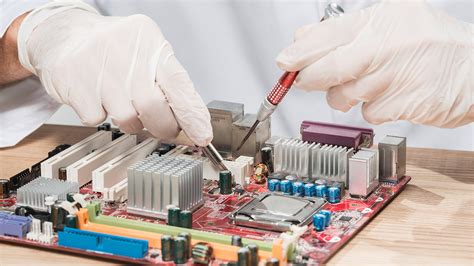
FR4/Flex/Rogers Material Options
When selecting materials for your PCB manufacturing project, understanding the strengths of FR4, Flex, and Rogers substrates ensures optimal performance and cost efficiency. FR4, the industry-standard epoxy laminate, provides a balance of durability and affordability, making it ideal for general-purpose circuits where PCB manufacturing cost is a priority. For applications requiring mechanical flexibility—such as wearable devices or compact electronics—Flex materials like polyimide enable bendable designs without compromising signal integrity. High-frequency projects, including RF communications or aerospace systems, often demand Rogers substrates, which minimize signal loss at microwave frequencies.
Leading PCB manufacturing companies tailor material recommendations based on your design’s electrical, thermal, and mechanical requirements. While FR4 remains the most economical choice for prototyping and mass production, specialized materials like Rogers may increase upfront costs but reduce long-term expenses by enhancing reliability. For PCB manufacturing business clients, this flexibility in material selection ensures scalability—whether producing five prototypes or one million units. Transitioning between material types requires close collaboration with your manufacturer to validate compatibility with fabrication processes, ensuring seamless integration into your product’s lifecycle.
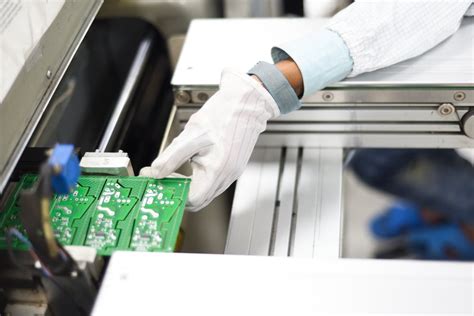
IPC2/3 Certified PCB Manufacturing
When selecting PCB manufacturing companies for your project, certification compliance is a critical factor in ensuring product reliability. IPC2/3 certified PCB manufacturing guarantees adherence to industry-recognized standards for design, assembly, and testing, which directly impacts the performance and longevity of your boards. These certifications validate that manufacturers meet stringent requirements for material selection, solderability, and electrical performance—factors that influence both PCB manufacturing cost and long-term operational efficiency.
For high-reliability applications like aerospace or medical devices, IPC Class 3 certification ensures zero defects in critical features, while Class 2 suits commercial electronics where minor imperfections are permissible. Partnering with a PCB manufacturing business that holds these certifications minimizes risks of field failures and reduces costly rework. Additionally, certified processes often streamline production timelines, as rigorous quality checks are embedded into every stage—from prototyping to mass production.
By prioritizing IPC2/3 compliance, you align your project with globally accepted benchmarks, ensuring consistency across batches and scalability for high-volume demands. This approach not only safeguards your design integrity but also optimizes PCB manufacturing investments by balancing upfront costs with lifecycle reliability.

PCB Assembly Starting at 2
When exploring PCB manufacturing options, you’ll find assembly services that begin at $2 per board, providing an accessible entry point for prototyping phases. Reputable PCB manufacturing companies achieve this competitive pricing through streamlined processes, combining automated pick-and-place systems with optimized material sourcing. This cost-efficient approach allows businesses to validate designs without overspending, particularly when testing multiple iterations.
The $2 starting rate typically applies to basic assemblies with standard components, but pricing scales transparently as complexity increases. Factors like surface-mount technology (SMT) density, component packaging, and solder mask requirements influence the final PCB manufacturing cost. For projects requiring specialized parts or mixed-technology assemblies (through-hole and SMT), costs remain manageable due to bulk supplier agreements maintained by established PCB manufacturing business providers.
Scalability is a key advantage—the same processes that enable low-cost prototypes effortlessly transition to mid-volume runs. Advanced manufacturers use modular production lines to accommodate orders from 100 to 10,000 units without sacrificing speed or quality. This flexibility ensures your initial investment in small-batch testing directly supports later expansion, minimizing retooling expenses. By leveraging tiered pricing models, you maintain budget control while progressing from concept validation to market-ready products.

Scalable PCB Manufacturing to 1M Units
When scaling electronics production, partnering with PCB manufacturing companies that offer seamless volume flexibility is critical. Whether you’re testing a prototype or ramping up to 1 million units, a robust PCB manufacturing infrastructure ensures consistency across orders. Advanced facilities leverage automated processes and modular workflows to maintain precision at every stage, minimizing PCB manufacturing cost while preserving quality—even during high-volume runs.
For businesses balancing short-term needs with long-term growth, scalable solutions eliminate the friction of switching suppliers. Reliable PCB manufacturing business models provide tiered pricing, material optimization (like FR4 or Rogers substrates), and IPC-certified assembly processes to accommodate evolving technical requirements. This adaptability is especially vital for industries like IoT or automotive, where demand fluctuations can shift rapidly.
Transitioning from low-volume batches to mass production also hinges on supply chain transparency. Leading providers integrate real-time monitoring systems, ensuring traceability from raw materials to final inspection. By aligning with partners capable of scaling efficiently, you avoid bottlenecks while maintaining competitive lead times. For insights into optimizing production workflows at any scale, explore this analysis on industrial electronics trends.
2-Day PCB Production Lead Times
By leveraging optimized production workflows and advanced machinery, leading PCB manufacturing companies now deliver fully assembled boards within 48 hours—a benchmark that reshapes expectations for prototyping and time-sensitive projects. This accelerated timeline is achieved through parallel processing of design validation, material preparation, and automated assembly lines, eliminating traditional bottlenecks in multilayer PCB fabrication. For businesses evaluating PCB manufacturing cost, the 2-day model maintains competitive pricing tiers by minimizing warehousing overhead through just-in-time inventory systems.
Critical to this speed is the integration of AI-driven DFM checks that preemptively resolve design conflicts, allowing PCB manufacturing teams to initiate production within hours of file submission. While rapid turnarounds traditionally implied premium pricing, scaled pricing models now enable cost-effective transitions from 5-unit prototypes to 10,000+ batches without lead time penalties. Manufacturers specializing in PCB manufacturing business solutions further enhance velocity with modular production cells that dynamically reconfigure for FR4, Flex, or Rogers materials—a flexibility crucial for IoT and aerospace applications requiring urgent design iterations.
To maintain quality at pace, facilities employ automated optical inspection (AOI) at three checkpoints, ensuring IPC Class 2/3 compliance even under compressed schedules. When sourcing partners for mission-critical projects, verify their capacity to sustain 2-day cycles across your entire PCB manufacturing volume range—true speed scalability separates market leaders from conventional vendors.
Multi-Layer PCBs (1-32 Layers)
When designing complex electronics, PCB manufacturing often demands solutions that balance performance, space efficiency, and signal integrity. Multi-layer PCBs, ranging from 1 to 32 layers, provide the versatility needed for advanced applications like medical devices, aerospace systems, or high-speed computing. Leading PCB manufacturing companies leverage precision stacking techniques to ensure reliable interlayer connections, whether you require a basic 4-layer board for IoT devices or a 32-layer configuration for server-grade hardware.
Material selection plays a critical role in optimizing PCB manufacturing cost and functionality. For instance, combining FR4 substrates for cost-effective rigidity with Rogers materials for high-frequency layers allows you to tailor designs without overspending. Advanced manufacturers adhere to IPC Class 2/3 standards to guarantee durability, even in boards with ultra-thin dielectric layers or embedded components.
Scaling from prototypes to mass production? Multi-layer designs are inherently scalable, enabling seamless transitions from low-volume batches to 1M-unit runs. While layer count impacts initial setup costs, economies of scale in the PCB manufacturing business help mitigate expenses over time. Whether you’re iterating prototypes or finalizing high-volume orders, ensure your provider offers design-for-manufacturability (DFM) feedback to avoid costly revisions.
Conclu
As you evaluate options for your next project, understanding the full spectrum of PCB manufacturing capabilities becomes critical. Leading PCB manufacturing companies balance speed, scalability, and precision to meet diverse needs—whether you require rapid prototyping for iterative design or high-volume production with consistent quality. Factors like material selection (FR4, Flex, or Rogers) and adherence to IPC2/3 standards directly influence both performance and long-term reliability.
Cost efficiency remains a priority, and modern PCB manufacturing business models offer tiered pricing structures that adapt to order volumes—from small batches starting at competitive rates to large-scale runs exceeding 1M units. Importantly, PCB manufacturing cost optimization doesn’t require compromising on lead times; advanced facilities now deliver complex multi-layer boards (up to 32 layers) in as little as two days. By aligning your requirements with a partner’s technical expertise and production capacity, you ensure seamless transitions from prototype to mass production while maintaining control over timelines and budgets.
FAQ
What factors influence pcb manufacturing cost?
The pcb manufacturing cost depends on board complexity, material selection, layer count, and order volume. High-layer designs using specialized materials like Rogers or Flex typically incur higher expenses, while bulk orders reduce per-unit pricing through economies of scale.
How do pcb manufacturing companies ensure quality control?
Reputable pcb manufacturing companies adhere to IPC Class 2/3 standards, employing automated optical inspection (AOI) and electrical testing. Certifications like ISO 9001 and UL listing further validate their commitment to reliability, especially for high-volume production runs.
Can a pcb manufacturing business handle both prototyping and mass production?
Yes, advanced pcb manufacturing business operations offer end-to-end solutions. Rapid prototyping services (24-hour turnaround) allow design validation before scaling to 1M+ units, ensuring seamless transitions from concept to full-scale manufacturing.
What materials are available for custom PCB orders?
Options include standard FR4, flexible circuits (Flex), and high-frequency substrates like Rogers. Material choice impacts thermal performance, signal integrity, and durability — critical factors for aerospace, medical, or IoT applications.
How are lead times managed for urgent orders?
Dedicated pcb manufacturing teams prioritize urgent projects through streamlined workflows. With 2-day production options and 24/7 engineering support, time-sensitive requirements for prototypes or small batches are consistently met.
Ready to Optimize Your PCB Project?
For tailored solutions that balance pcb manufacturing cost and performance, please click here to consult with industry specialists. Submit your design files for an instant quote and DFM analysis.

